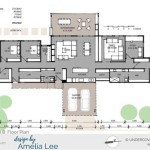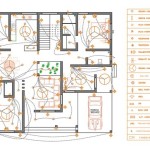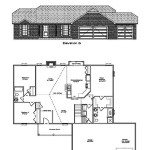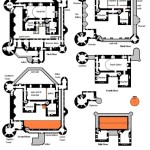Building Plans for an Indoor Basketball Court: Essential Aspects
Building an indoor basketball court for personal use or recreational purposes requires careful planning and execution. To ensure a safe, efficient, and enjoyable playing experience, it is crucial to consider essential aspects of the design and construction process.
1. Court Dimensions and Layout: Determine the desired court size based on space availability, player needs, and the level of competition. Standard NBA court dimensions are 94 feet long and 50 feet wide, while high school and college courts may vary slightly. Consider the necessary buffer zones and seating areas around the court.
2. Structural Specifications: The court's subfloor, foundation, and support structure must withstand the impact and pressures of game play. Consult with an engineer to determine the appropriate load-bearing capacity and the materials required for the underlayment, flooring, and wall systems.
3. Surface and Lighting: Select a durable and shock-absorbent flooring material that meets industry standards for indoor basketball courts. The lighting system should provide optimal visibility for players and spectators, without causing glare or shadows.
4. Ventilation and Air Quality: Ensure proper ventilation and air quality within the indoor court area. Consider air conditioning, heaters, and exhaust systems to maintain a comfortable temperature and prevent condensation.
5. Safety Measures: Incorporate safety features such as protective padding on walls, goal posts, and benches. Proper lighting, emergency exits, and fire safety systems are also essential. Install durable backboards and rims that can withstand the force of the game.
6. Amenities and Infrastructure: Plan for additional amenities such as locker rooms, showers, a scoreboard, and sound system. Consider space for storage of equipment and seating for spectators.
7. Professional Assistance: Seek professional guidance from architects, engineers, and experienced court builders. They can help ensure compliance with regulations, optimize the design, and provide valuable insights throughout the construction process.
8. Compliance and Regulations: Adhere to applicable building codes, safety standards, and regulations for indoor sports facilities. Obtain necessary permits and inspections to ensure that the court meets all requirements.
9. Maintenance and Upkeep: Plan for ongoing maintenance and upkeep of the court, including regular cleaning, repairs, and replacement of components as needed. This will help maintain the court's functionality and safety over time.
By considering these essential aspects, you can create a comprehensive plan for building an indoor basketball court that meets your specific needs and provides an exceptional playing experience for years to come.

Bungalow Style House Plan 5 Beds 6 Baths 4222 Sq Ft 422 Indoor Basketball Court Floor Plans

Exclusive New American House Plan With Indoor Basketball Court 73405hs Architectural Designs Plans

House Plans With Indoor Basketball Court How To Costs

Craftsman Style House Plan 5 Beds 3 Baths 7099 Sq Ft 117 699 Indoor Basketball Court Flooring

House Plan 7 Bedrooms 2 5 Bathrooms Garage 3894 Drummond Plans

House Plan 7 Bedrooms 2 5 Bathrooms Garage 3894 Drummond Plans

Craftsman Style House Plan 6 Beds 5 Baths 6679 Sq Ft 920 24 Plans Indoor Basketball Court

Home Court Advantage Indoor Hoops Boston Design Guide

House Plan 7 Bedrooms 2 5 Bathrooms Garage 3894 Drummond Plans

Everything To Know About An Indoor Basketball Court Rismedia








